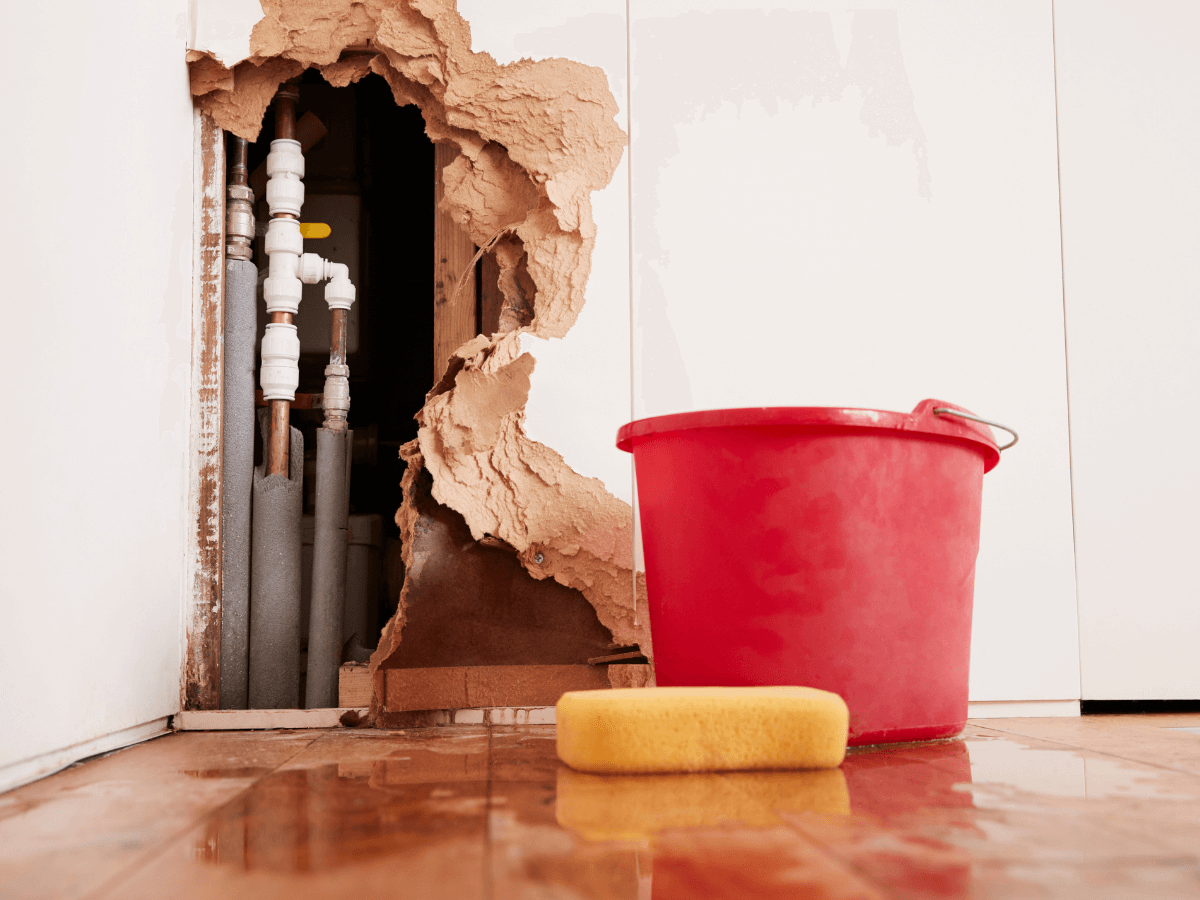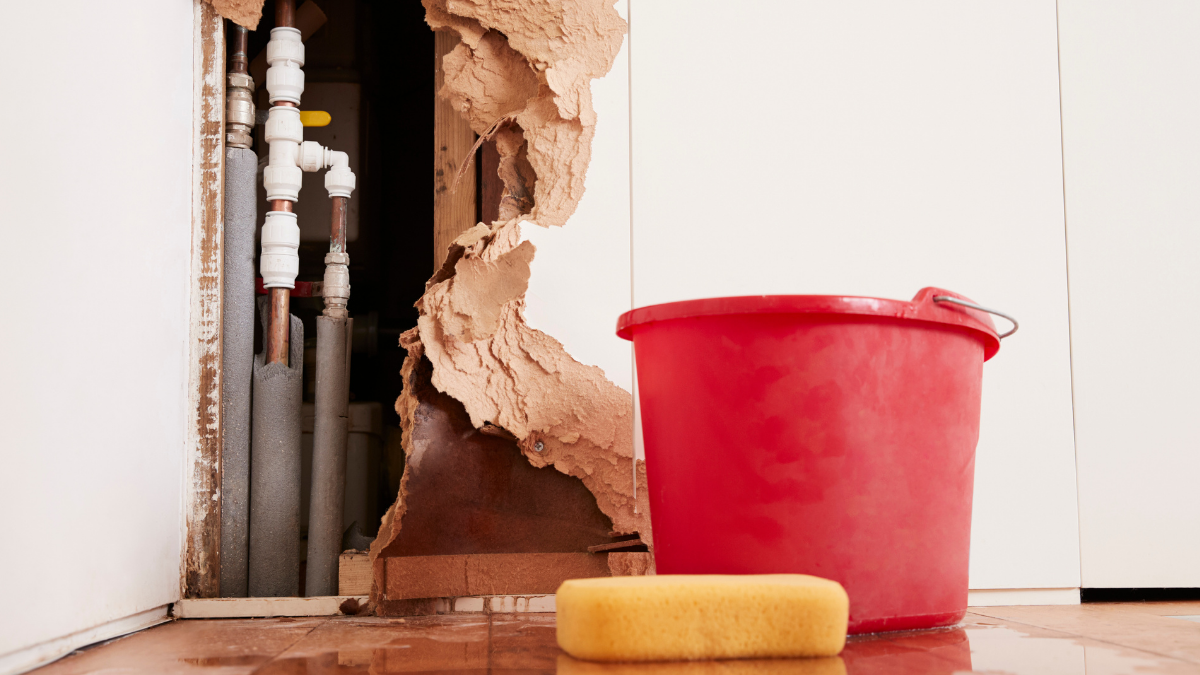
Water damage cleanup and recovery is not something to put off; the longer water sits on your property, the more damage it inflicts on your home decor and belongings. It doesn’t matter how much water is flooding your property; even ankle-deep floods may lead to water damage and disease.
Don’t try to clean up on your own; it’s best to call a water restoration company. They have the expertise and equipment to efficiently extract water from your property and perform home water damage cleanup and recovery. With their help, you’ll be back to a clean and dry home in no time.
But why exactly is it important to clean up water damage? And what happens during water damage repair?
Why Is Water Cleanup Necessary?
Water damage requires immediate attention; it can irreversibly harm your property and valuables. Leaving water unattended also increases the chances of water seeping through your home’s foundation, weakening its structural integrity.
Water damage also results in mold growth, putting everyone’s health and safety at risk. Molds can cause allergic reactions, respiratory diseases, headaches, or asthma attacks in your family members and pets if not addressed promptly.
Floods and sewage backups may also cause water damage. They lead to unsanitary situations and pose a health risk to everyone; these waters may contain human or animal waste, harmful chemicals, and disease-causing organisms. Floods may also bring debris like tree branches, broken glass, and more.
Always call professionals for water extraction, cleanup, and restoration to keep your appliances like thermostats safe. With their knowledge, equipment, and safety gear, experts in home water damage cleanup and restoration services will:
- Protect your property from mold growth
- Reduce the chance of irreversible damage to valuables
- Restore your property to its original condition
What Happens During Water Damage Repair?
Water damage cleanup is a task that requires professional help. Water restoration and recovery companies know how to clean water damage effectively and eliminate all moisture from your home up to the last drop.
Still, there’s no harm in learning the steps involved in clearing up water damage. It may also give you insight into what you can do while waiting for professionals to arrive.
To clean up water damage, professionals will need to:
1. Find the Source of the Problem
Locating the water source is the first and most crucial step of water damage cleanup. Sometimes, simply turning off the main water valve will suffice. Other times, the cause of the problem might not be too easy to fix. Water damage restoration and recovery experts are the best people to do this job for you; they have the necessary knowledge and equipment to find and stop the flooding on your property, regardless of the cause.
2. Identify Safety Hazards
The next step in water damage cleanup is identifying safety hazards like damaged electrical sockets or loose furnishings. Water is a conductor, so electricity can flow on all wet surfaces. Shutting off the main circuit breaker is essential to avoid accidents.
Avoid walking in floodwaters with debris to ensure your safety. Murky floodwaters may make it difficult to see loose furnishings that can snag your skin or injure you. It may also bring debris like broken glass and tree branches that pose a safety risk.
Call experts with the right gear to wade through these dangerous waters.
3. Extract Water
After identifying and clearing out safety hazards, water removal services extract water from your property. Leaving your property and belongings submerged will permanently damage them.
Experts use industrial wet vacuums, water extraction machines, pumps, fans, and other professional drying equipment to clean up water damage. These tools efficiently remove water and moisture from carpets and wood floors, which prevents them from getting water damage.
Any moisture or excess water in your property, especially in basements, may result in severe mold growth. Experts prevent this by inspecting all water-damaged areas again, making sure everything is clean and completely dry.
4. Disinfect Affected Areas
Water extraction professionals have commercial-grade, EPA-approved cleaning and sanitizing products that eliminate germs and bacteria on all surfaces. They may also use a fogging machine containing these cleaning products to disinfect larger areas and eliminate foul odors.
Spraying, wiping, and dry cleaning are other methods experts use to clean and preserve as many appliances and furnishing as possible and remove any other health hazards.
5. Dehumidify the Property
Dehumidification is the final step in cleaning up water damage. Most building materials are porous and retain moisture, which may warp your home’s frame, cause the drywall to sag, and allow black mold to grow and spread. Experts prevent these by using dehumidifying equipment that circulates dry air in the area affected by water damage, removing any lingering moisture and thoroughly drying out your home.
How Much Does Water Damage Cleanup Cost?
Many property owners hesitate to call water damage cleanup and extraction experts because they don’t know how much it costs. The extent of the damage and the area affected will determine the cost of extraction services.
The average cost for extraction and restoration is between $2,000 and $5,000. Most cases require drywall repairs, cleaning, and repainting; some may need reconstruction.
For better and more accurate pricing, call for professional water damage restoration services in Dallas. They are equipped to assess the damage and repair costs and provide quality restoration and recovery work.
Understanding the Importance of a Cleanup
While several reasons have been put forward to explain why a cleanup is recommended after being exposed to water damage, these can be summarized into one general idea: prevent the spread of diseases. All cleanup jobs center on this, but because some diseases can be life-threatening, any cleanup attempt is best left to professionals.
Admittedly, some aspects of the cleanup process do appear to be easy, as in the case of a simple inspection. This is something you can probably do on your own, but when it comes to cleanups that involve technical know-how (extraction, disinfection, dehumidification), experts like rapidrestoration should be allowed to take over, not only to keep you safe and healthy, but to ensure that the job is completed right away so your property will be germ-free.
Kane Walker
Related posts
Stay connected
- How LoveOn Chat Is Becoming the Most Versatile AI Companion for Digital UsersThe internet keeps shifting toward hyper-personal interaction, and AI companions are at the center of this shift. What used to be simple chatbots are now evolving into emotionally aware, adaptive, and multi-functional digital partners. Among the new generation of platforms, LoveOn Chat is becoming one... The post How LoveOn Chat Is Becoming the Most Versatile […]

